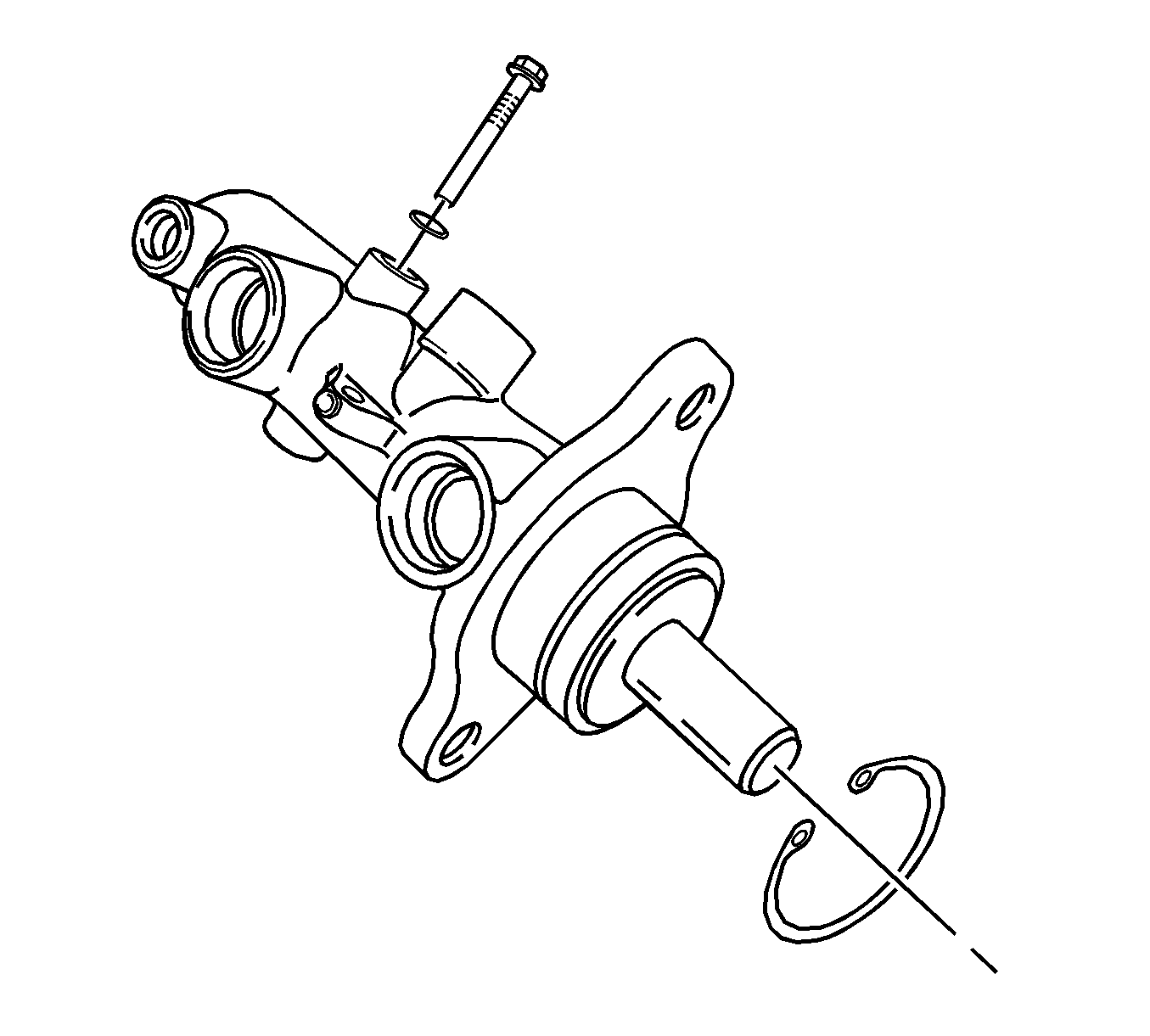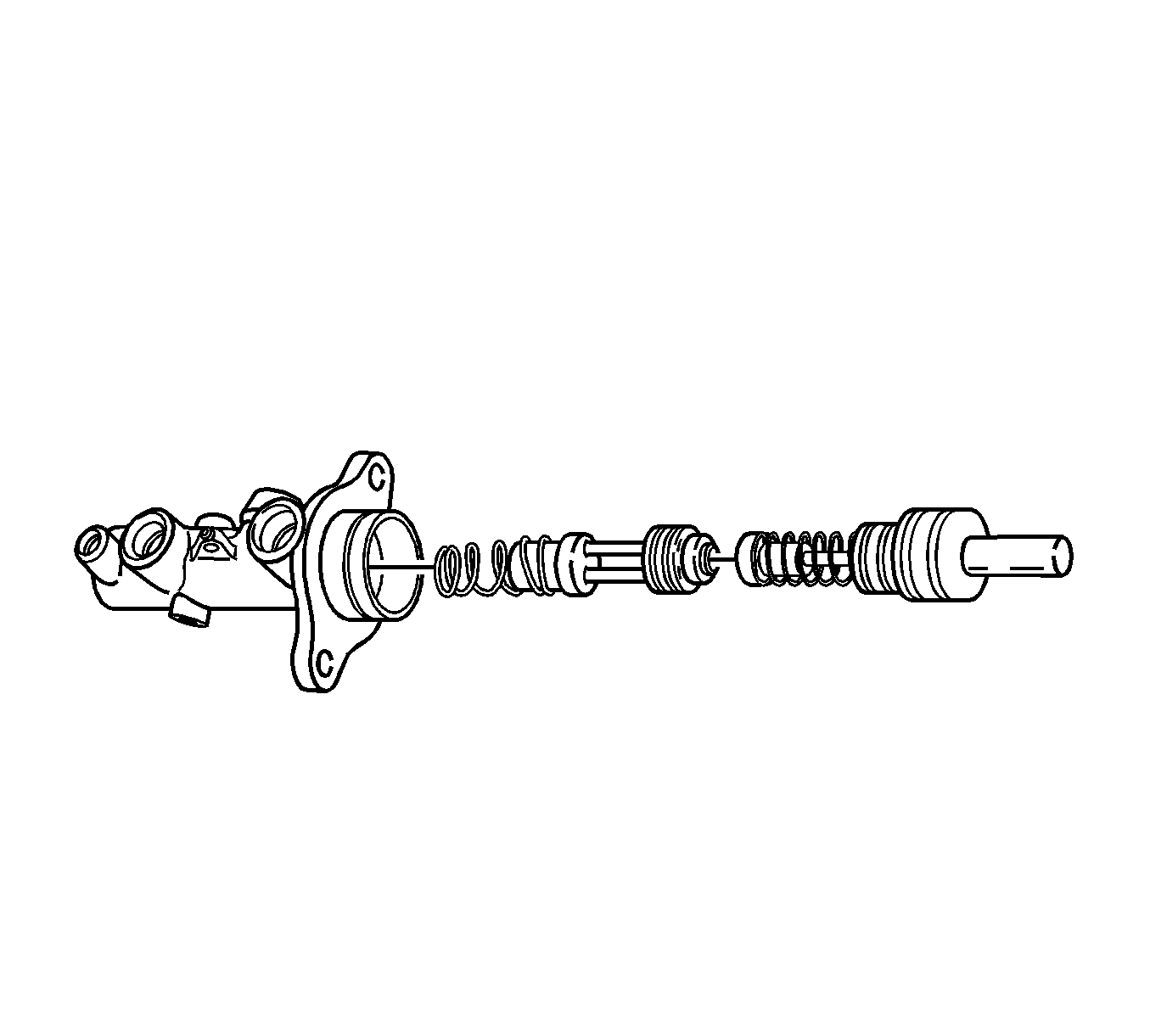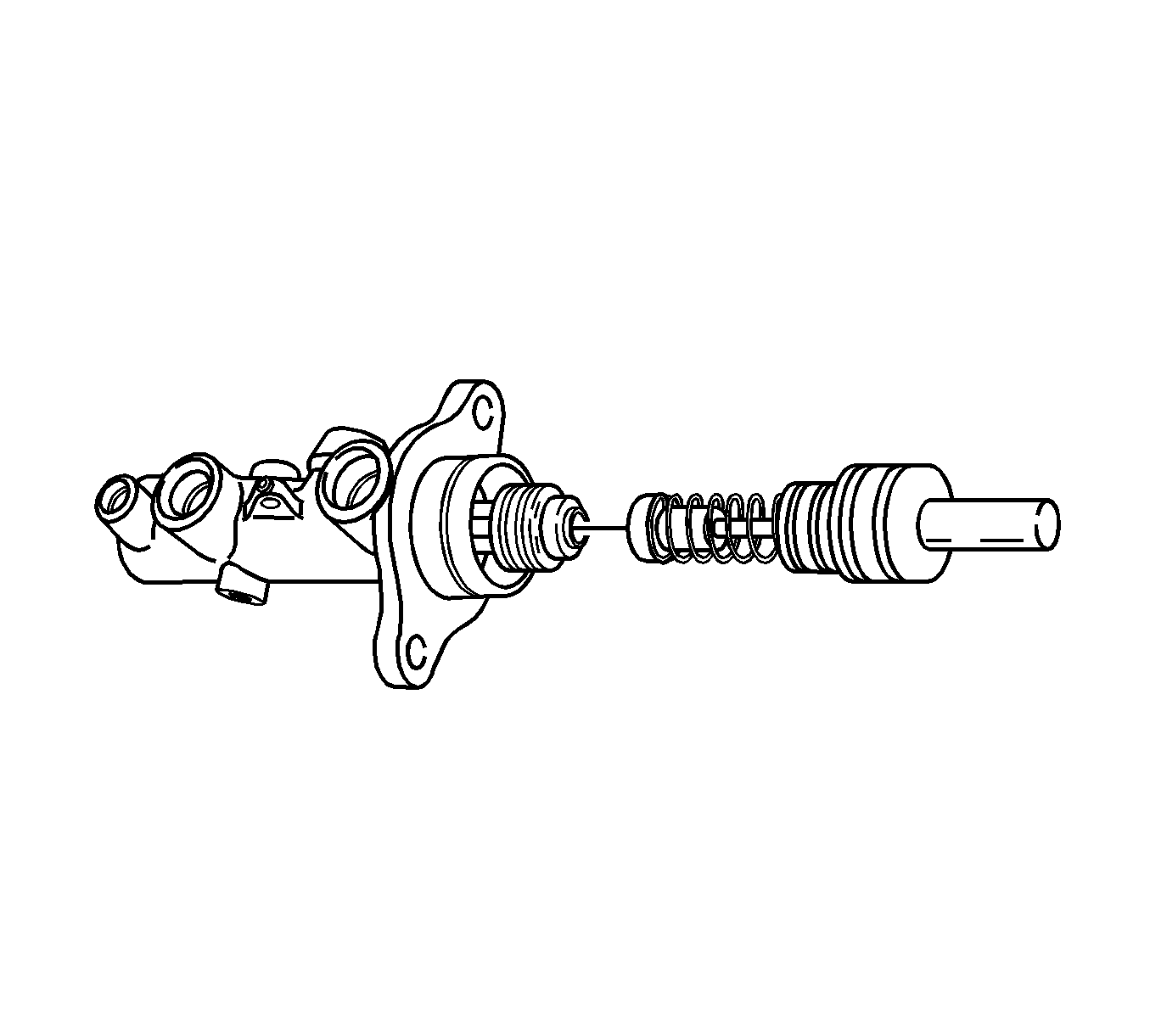Disassembly Procedure
- Remove the master cylinder. Refer to Master Cylinder Replacement.
- Remove the brake fluid reservoir. Refer to Master Cylinder Reservoir Replacement.
- Remove the seal ring from the cylinder bore.
- Press down the piston with a welding rod or an equivalent tool in a compensating port.
- Remove and discard the retaining ring from the cylinder body. The non-ABS master cylinder body is shown.
- Remove the primary piston. The ABS master cylinder body is shown.
- Carefully remove the secondary piston assembly and the spring from the master cylinder bore.
- Discard the rubber parts and the retaining rings.


Caution: Use care not to damage the piston bore or retainer groove during primary piston retainer ring removal.

Assembly Procedure
- Clean the parts with denatured alcohol or clean brake fluid. Dry the parts with compressed air.
- Inspect the master cylinder bore for scoring or corrosion. If scoring or corrosion is evident, replace the master cylinder body.
- Lubricate the master cylinder bore with clean brake fluid.
- Carefully insert the secondary piston assembly bore until the secondary piston contacts the base of the cylinder body. Use a wood or a plastic drift, if necessary.
- Insert the primary piston.
- Press the pistons into the cylinder bore using a wooden or a plastic drift. The non-ABS cylinder body is shown.
- Insert the new retaining ring into the groove in the cylinder bore. Remove the welding rod.
- Move the pistons backward and forward after installation in order to inspect for free movement.
- Lubricate the seal ring and insert the seal on the shaft into the cylinder bore. The open side must face outward until the seal rests on the piston.
- Install the brake fluid reservoir to the master cylinder. Refer to Master Cylinder Reservoir Replacement.
- Install the master cylinder assembly. Refer to Master Cylinder Replacement.
- Bleed the braking system. Refer Hydraulic Brake System Bleeding.
Warning: Refer to Brake Fluid Warning in the Preface section.

Caution: Do not hone the master cylinder bore. When the brake master cylinder is overhauled, it is recommended that the cylinder body be replaced rather than CLEANED UP by honing the bore. The master cylinder has a hard, highly polished BEARINGIZED surface, which is produced by diamond boring followed by ball or roller burnishing under heavy pressure. Honing will destroy this hard smooth surface and cause rapid wear of the rubber cups.
Caution: Use only approved solvents when cleaning or flushing the master cylinder and related components. Solvents which contain traces of mineral oil or other contaminants will damage the rubber parts in the system.

Note: When installing the new retaining ring, take care not to damage the cylinder bore.

